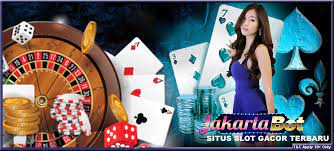Slot machines, often referred to as “awpslot,” are a staple of casinos worldwide and a favorite for many gamblers. Known for their flashing lights, ringing sounds, and promise of instant rewards, slot machines offer a unique combination of excitement, chance, and entertainment. But what exactly makes these machines so popular, and how have they evolved over time?
A Brief History of Slot Machines
The story of the slot machine begins in the late 19th century with the invention of the first mechanical slot machine by Charles Fey in 1895. Known as the “Liberty Bell,” this machine featured three spinning reels with five symbols: horseshoes, diamonds, spades, hearts, and the Liberty Bell. The game’s simplicity and the thrill of spinning the reels quickly captured the public’s imagination, leading to the rapid spread of slot machines across the United States.
Over the years, the mechanical machines became more sophisticated, introducing new features such as multiple paylines and bonus rounds. However, it wasn’t until the 1970s when electronic slots were introduced that the game truly evolved. These machines allowed for more complex game mechanics, including digital symbols and random number generators (RNGs), which eliminated the need for physical reels and allowed for the creation of virtual slots with countless themes and designs.
How Slot Machines Work
Modern slot machines, both physical and online, operate using a random number generator (RNG) system. The RNG generates thousands of random numbers every second, determining the outcome of each spin. When you press the “spin” button, the machine stops at one of these randomly generated numbers, which corresponds to a particular combination of symbols on the reels.
Slot machines typically have a set of reels (usually three or five) with various symbols. To win, players must line up certain symbols along a payline (a line running horizontally or diagonally across the reels). Winning combinations vary depending on the type of machine and its paytable.
In addition to basic symbols, many slots also include special features like wilds (which substitute for other symbols), scatters (which trigger bonus rounds), and multipliers (which increase the payout). These features add layers of excitement and provide players with more opportunities to win big.
Types of Slot Machines
- Classic Slots: These machines are often three-reel games with simple paylines. They typically feature traditional symbols like fruits, bells, and bars, making them a nostalgic favorite for many players.
- Video Slots: These are modern slot machines with five or more reels, featuring advanced graphics, animations, and bonus features. Video slots can have multiple paylines, ranging from a few to hundreds, and offer a variety of themes, from movies to mythology.
- Progressive Slots: Progressive slots offer the potential for massive jackpots. A small portion of each player’s bet contributes to the jackpot, which grows until someone wins. These jackpots can reach millions of dollars, making them highly popular among gamblers.
- 3D Slots: An advancement in video slots, 3D slots use high-definition graphics and animations to immerse players in a fully interactive experience. The 3D elements enhance the gaming environment and often feature elaborate bonus rounds and storylines.
- Megaways Slots: These are a relatively new type of video slot with an innovative reel system that changes the number of symbols on each reel for every spin. This creates thousands of potential ways to win and adds an element of unpredictability and excitement.
Why Are Slot Machines So Popular?
Several factors contribute to the enduring popularity of slot machines:
- Ease of Play: Unlike table games such as poker or blackjack, slot machines require no strategy or skill to play. Anyone can sit down and spin the reels, making them accessible to both novice and experienced gamblers.
- Entertainment Value: The flashing lights, sound effects, and immersive themes of modern slots create an engaging experience. Whether you’re playing for fun or for big wins, the excitement is always high.
- Potential for Big Wins: Slot machines, especially progressive slots, offer the possibility of life-changing jackpots. This potential for huge payouts is one of the main draws, as players dream of hitting the big one.
- Variety of Themes: Today’s slots cover virtually every imaginable theme, from ancient civilizations and popular movies to fantasy worlds and mythical creatures. This wide range of themes ensures that there’s a slot for everyone.
- Bonus Features and Free Spins: Many modern slots include bonus rounds and free spins, which provide players with additional chances to win without spending more money. These features keep the gameplay fresh and exciting.
The Future of Slot Machines
As technology continues to advance, so too does the world of slot machines. Virtual reality (VR) slots, skill-based gaming, and further integration with mobile platforms are all on the horizon. With the rise of online casinos, players now have access to thousands of slots from the comfort of their homes, further increasing the popularity of these games.
The use of blockchain technology and cryptocurrency also promises to bring new levels of transparency and security to online slots. As the gaming industry evolves, we can expect slot machines to become even more immersive, interactive, and rewarding.
Conclusion
Slot machines have come a long way since their humble beginnings in the late 19th century. From mechanical to electronic to online versions, these games have captivated players worldwide with their exciting gameplay and the potential for big wins. Whether you’re a casual player or a seasoned gambler, the appeal of slot machines remains undeniable. With continued technological advancements, the future of slot machines promises even more thrilling possibilities for players around the globe.
